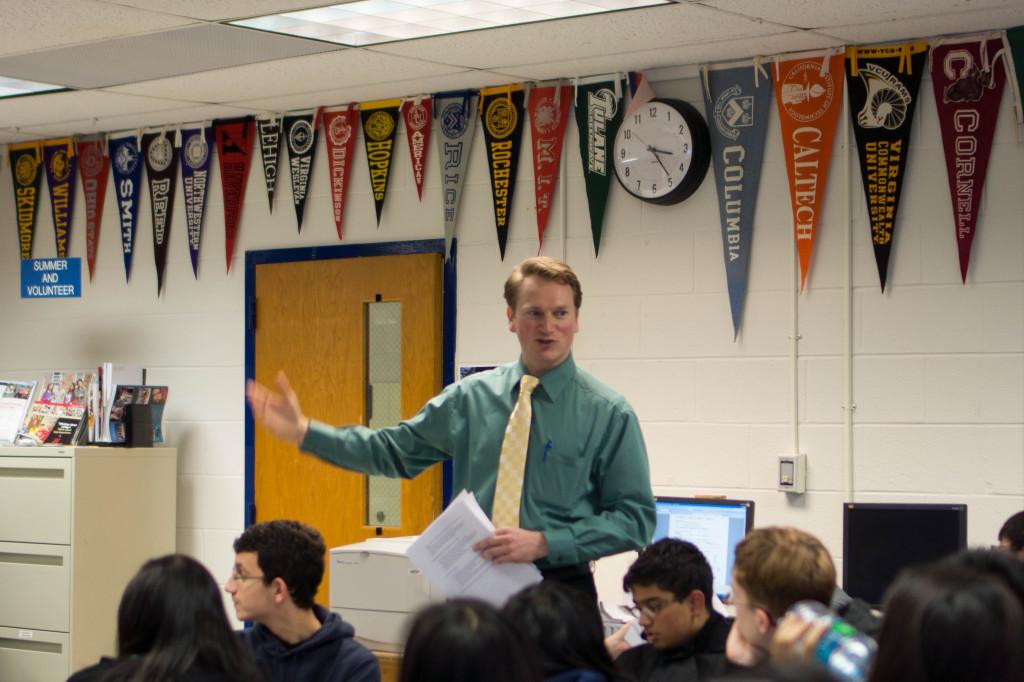College and Career Center introduces summer opportunities to students
Mentorship Program Coordinator and Science and Technology Division Manager Matthew Pearce gives a presentation on the summer STEM opportunities available to students.
December 14, 2013
On Dec. 13, the College and Career Center held the first of several interest meetings for students looking to participate in competitive summer programs in the fields of science, technology, engineering and mathematics (STEM).
The session began with Optics and Modern Physics Lab Director John Dell, who gave a brief presentation about the Research Science Institute (RSI), the highly competitive research mentorship program held at the Massachusetts Institute of Technology (MIT).
Matthew Pearce, the Mentorship Program Coordinator and Science and Technology Division Manager, then summarized other research opportunities that are more popular due to their higher acceptance rates and convenient locations in nearby areas such as Washington, D.C., and Maryland.
Some of the possibilities that Pearce mentioned are internships at various Navy and Army bases with the Science and Engineering Apprenticeship Program (SEAP) and at the National Institutes of Health (NIH). Other programs that are gaining popularity include the Aspiring Scientists Summer Internship Program (ASSIP) at George Mason University, as well as the J. Craig Venter Institute.
Pearce also noted that there are numerous other opportunities available around the country, although fewer students attend these due to their inconvenient locations.
“We’re lucky to have some amazing research institutions in this area, and there are some excellent summer experiences that could give you real insight into the world of research,” Pearce said.
Pearce also recommended that, in order to increase their chances of placing in a program, students should do background research on scientists that they are interested in working with. By doing this and then contacting potential mentors, students can better demonstrate that they are interested, thus gaining an advantage in the competitive application processes.
For students, the interest meeting served as a valuable way to gather information.
“The session was very informative,” junior Amanda Lim said. “It made me realize that there are more opportunities available for research in STEM fields than the traditional and more publicized internships, such as SEAP and NIH.”






